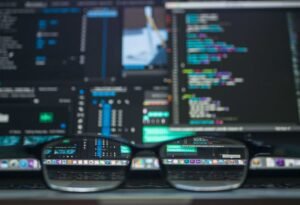Why Does Deepfake Exist?
Deepfake, a portmanteau of “deep learning” and “fake,” refers to a computational technique that uses artificial intelligence to manipulate or generate visual and audio content that appears real but is actually fabricated. While deepfakes have garnered both attention and criticism, it is essential to understand the motivations behind their existence.
Key Takeaways:
- Deepfakes are created primarily for entertainment purposes, such as creating realistic face swaps in movies and videos.
- There is a growing concern over the malicious use of deepfakes, including fraudulent activities, disinformation campaigns, and cyberbullying.
- Ethical considerations and regulations are being debated to curb the negative impact of deepfake technology.
**Deepfake technology** has become increasingly sophisticated, enabling the *creation of highly realistic videos* and images that can deceive even trained observers. The main motivations behind the development and proliferation of deepfakes can be categorized into three broad areas: entertainment, malicious intent, and artistic expression.
Deepfakes were initially used for *entertainment purposes*, allowing filmmakers and content creators to achieve realistic face swaps in movies and videos. By using deep learning algorithms, actors’ faces could be replaced with others while maintaining consistent expressions and movements. This technology has brought new possibilities to the film industry, providing a more efficient and cost-effective way to achieve visual effects.
However, it is the *malicious use of deepfakes* that has raised significant concerns. *Fraudulent activities* such as impersonations, scams, and identity theft may be facilitated by deepfake technology. There is also a growing threat of *disinformation campaigns*, where deepfakes are employed to spread false information or manipulate public opinion. Furthermore, deepfakes can be utilized for *cyberbullying*, creating fake images or videos to harm individuals’ reputation or privacy.
Table 1: Deepfake Use Cases
| Use Case | Examples |
|---|---|
| Entertainment | Face swaps in movies, mimicry of actors, enhancing visual effects |
| Malicious Intent | Fraud, disinformation campaigns, cyberbullying |
| Artistic Expression | Creating digital artworks, exploring alternative realities |
On the other hand, *artistic expression* also plays a role in the emergence of deepfake technology. Some artists and creators embrace deepfakes as a medium for digital art, using them to explore alternative realities or to challenge societal norms. These deepfakes may serve as thought-provoking pieces that blur the line between reality and fiction.
Additionally, the rapid advancement of deepfake technology has sparked *ethical concerns* regarding consent, privacy, and the potential to undermine trust in visual evidence. Ensuring the authenticity and reliability of images and videos becomes more challenging in a world where **manipulated content** can appear indistinguishable from genuine footage. This has resulted in ongoing debates surrounding the need for ethical guidelines, stricter regulations, and improved detection techniques.
Table 2: Ethical Considerations
| Ethical Consideration | Implications |
|---|---|
| Consent | Deepfakes may be used without the consent of individuals, violating their right to privacy. |
| Privacy | Deepfakes can exploit and manipulate personal information, leading to potential harm or harassment. |
| Trust | Deepfakes undermine the trust placed in visual evidence, making it harder to distinguish fact from fiction. |
To address these concerns, efforts are being made to develop better detection methods to identify deepfake content. The utilization of machine learning algorithms and other technological advancements aims to mitigate the risks associated with deepfakes. Moreover, *education and awareness campaigns* can help individuals become more discerning consumers of digital media.
In conclusion, the existence of deepfake technology is driven by various factors, including its potential for entertainment, malicious intent, and artistic expression. While it offers unprecedented opportunities, the misuse of deepfake technology poses complex challenges that require a multi-faceted approach involving technology, ethics, and regulation.

Common Misconceptions
Misconception: Deepfake is used only for harmful purposes
One common misconception about deepfake technology is that it is solely used for malicious activities, such as spreading fake news or creating damaging content. While it is true that the misuse of deepfake can lead to significant negative consequences, there are also legitimate and positive applications of this technology.
- Deepfake can be used in the entertainment industry for creating realistic CGI animations.
- It can be utilized in the field of education to enhance the learning experience with interactive virtual teachers.
- Deepfake can also be used in medical research for simulating disease progression and drug testing.
Misconception: Deepfake technology is highly advanced and difficult to detect
Another misconception regarding deepfake is that it is an extremely advanced technology that can fool any viewer without detection. While deepfake techniques have indeed become more sophisticated, there are several methods available to detect and identify deepfake content.
- Data verification and authentication techniques can help identify visual inconsistencies and irregularities in deepfake videos.
- Audio analysis algorithms can detect discrepancies in lip-syncing and audio quality, which are often telltale signs of deepfake manipulation.
- Forensic analysis can be employed to identify traces of deepfake generation in the metadata of digital files.
Misconception: Deepfake will make all videos and images untrustworthy
While deepfake technology has the potential to create convincing fake videos and images, it does not mean that all videos and images should be considered untrustworthy. It is important to remember that deepfake content still requires significant computational power and training data to generate.
- Most authentic videos and images have reliable sources, verifiable origins, and established credibility.
- The majority of individuals and organizations maintain ethical standards and refrain from creating or sharing deceptive deepfake content.
- Media literacy and critical thinking skills can help individuals differentiate between authentic and deepfake content.
Misconception: Deepfake can perfectly replicate anyone’s likeness
While deepfake technology has produced incredibly realistic results, it is still limited in its ability to perfectly replicate someone’s likeness. Generating a high-quality deepfake requires ample source material, such as images and videos of the person being impersonated.
- Deepfake quality can vary significantly based on the available training data.
- Detailed features like the eyes, teeth, and fine facial expressions may be challenging to accurately replicate.
- In the absence of sufficient source material, deepfakes may appear less convincing or flawed.
Misconception: Deepfake is an unsolvable problem
It is a misconception that deepfake technology is an unsolvable problem. While deepfake technology poses significant challenges in maintaining trust and security, ongoing research and efforts are dedicated to developing effective countermeasures.
- Advancements in detection algorithms and artificial intelligence can help identify and classify deepfake content more accurately.
- Stricter regulations and legal frameworks can discourage the misuse of deepfake and hold perpetrators accountable.
- Public awareness campaigns can educate individuals about the risks and consequences associated with deepfake technology.

Introduction
Deepfake technology has become a widely debated topic due to its potential misuse and manipulation of media content. This article explores various aspects of deepfake technology, shedding light on its origins, applications, and potential impact on society.
The Origins of Deepfake Technology
A look into the origins of deepfake technology showcases its relatively recent development. It was first popularized in 2017 when online forums and social media platforms became flooded with manipulated videos. These videos showed how artificial intelligence algorithms could convincingly swap faces and create incredibly realistic fake content.
| Year | Event |
|---|---|
| 2017 | Deepfake technology gains widespread attention |
| 2017 | Online forums and social media flooded with manipulated videos |
Applications of Deepfake Technology
The technology has found applications in multiple fields, including entertainment, politics, and security. The following table provides some examples of the varied uses of deepfake technology.
| Field | Applications |
|---|---|
| Entertainment | Creating realistic face-swapped videos for movies and TV shows |
| Politics | Generating manipulated videos for political propaganda |
| Security | Training facial recognition systems and cybersecurity simulations |
Deepfake Technology and Fake News
Deepfake technology has raised concerns about the potential spread of fake news and misinformation. The manipulation of videos can easily deceive viewers and has the potential to disrupt public trust. The table below highlights the impact of deepfake technology on the spread of fake news.
| Effect | Description |
|---|---|
| Disinformation | Deepfakes can be used to create realistic false narratives and spread misinformation |
| Media Manipulation | Manipulated videos can cause public confusion and undermine the credibility of genuine media |
| Political Influence | Deepfakes can be used to target specific individuals or political figures |
Deepfake Detection Techniques
As deepfake technology advances, so do efforts to detect and combat its misuse. Researchers and technology companies have developed various techniques to identify deepfake content, as shown in the table below.
| Technique | Description |
|---|---|
| Forensic Analysis | Experts analyze inconsistencies, digital artifacts, and anomalies in videos to identify deepfakes |
| Machine Learning Algorithms | AI models are trained to recognize patterns indicative of deepfake content |
| Metadata Analysis | Examining video metadata to detect anomalies or suspicious alterations |
Legal and Ethical Implications
The rise of deepfake technology has raised significant legal and ethical concerns. Governments and organizations around the world are grappling with how to address these issues. The table below outlines some of the key legal and ethical implications associated with deepfake technology.
| Implication | Description |
|---|---|
| Privacy Violations | Deepfakes can infringe on an individual’s privacy by manipulating their likeness |
| Identity Theft | Creating fake videos can lead to the impersonation of individuals or public figures |
| Criminal Misuse | Deepfakes can be used to commit fraud, blackmail, or other forms of criminal activity |
Public Awareness and Education
Increasing public awareness about deepfake technology and educating individuals about its existence and potential consequences are crucial for mitigating its negative impact. The table below highlights steps that can be taken to promote public awareness and education.
| Step | Description |
|---|---|
| Media Literacy Programs | Integrating deepfake awareness and detection training in educational curriculums |
| Public Service Announcements | Creating informative campaigns to inform the public about deepfake technology |
| Fact-Checking Organizations | Supporting organizations that verify media content and debunk deepfake videos |
Technological Advancements
Researchers and tech companies continue to develop new technologies and tools to better detect and combat deepfake content. The following table highlights some of the ongoing advancements in the field.
| Advancement | Description |
|---|---|
| Deepfake Forensics | Advancements in forensic techniques to identify sophisticated deepfake manipulation |
| Real-Time Deepfake Detection | Developing algorithms capable of detecting deepfakes in real-time to prevent their spread |
| Blockchain Verification | Exploring the use of blockchain technology to verify the authenticity of media content |
The Future of Deepfake Technology
The continuous evolution of deepfake technology raises questions about its potential future impact on society. While its negative implications are significant, there are opportunities for positive applications as well. Striking a balance between regulation and innovation will be vital for shaping the future of deepfake technology.
Why Does Deepfake Exist? – Frequently Asked Questions
FAQs
Why are deepfakes created?
Deepfakes are created for various reasons, such as entertainment, artistic expression, political satire, and sometimes even malicious purposes. They allow for the manipulation and alteration of visual content, often replacing someone’s face with another, which can be both amusing and concerning.
What is the motivation behind developing deepfake technology?
The motivation behind developing deepfake technology can be attributed to the increasing availability of powerful computational resources, advancements in artificial intelligence (AI), and the desire to explore the boundaries of computer-generated content. Deepfakes have sparked interest among researchers, developers, and artists, who aim to push the limits of what is possible in digital media manipulation.
Is deepfake a recent phenomenon?
While deepfake technology has gained significant attention in recent years, particularly due to its potential misuse, the concept of manipulating visual content has a longer history. The term “deepfake” itself was coined in 2017, but the techniques used in deepfakes have been around for a while, albeit not as sophisticated as they are now.
Are deepfakes always intended to deceive people?
No, deepfakes are not always intended to deceive. While some deepfakes are created with the intention to deceive or spread misinformation, others are developed purely for entertainment or experimentation purposes. It is important to evaluate the intent behind each deepfake and critically assess the content before drawing conclusions.
What are the potential societal implications of deepfake technology?
Deepfake technology has raised concerns regarding misinformation, identity theft, and the erosion of trust in digital media. The ability to fabricate realistic videos and images can have serious consequences and impact various sectors, including politics, journalism, and personal relationships. It is crucial for individuals, organizations, and policymakers to develop strategies to detect and mitigate the harmful effects of deepfakes.
Can deepfakes be used for positive purposes?
Yes, deepfakes can be used for positive purposes. They can be employed as powerful tools for special effects in movies, enhancing virtual reality experiences, preserving historical footage, or in ethical research projects exploring the implications of this technology. However, the responsible use of deepfakes is essential in ensuring their positive potential is effectively harnessed.
What steps are being taken to combat the malicious use of deepfakes?
Various organizations, both governmental and private, are working on developing techniques to detect and counter deepfakes. Collaborative efforts between researchers, technology companies, and policymakers are aimed at improving authenticity verification algorithms, promoting media literacy, encouraging responsible technology use, and establishing legal frameworks to address the malicious use of deepfakes.
Can deepfake technology be regulated?
The regulation of deepfake technology is a complex challenge since it involves balancing freedom of expression and addressing potential harmful consequences. Governments and legal authorities are exploring ways to regulate and address the issues associated with deepfake technology, including criminal activities, misinformation, and privacy violations. Striking the right balance between regulation and innovation is a crucial aspect of governing this emerging technology.
Can machine learning be used to detect deepfakes?
Yes, machine learning techniques can be utilized to detect deepfakes. Researchers are actively working on developing algorithms and models to detect manipulated content. However, as deepfake technology evolves, so do the methods used to create and detect such content. Continuous research and development in machine learning techniques are necessary to stay ahead in the cat-and-mouse game between deepfake creation and detection.
What can individuals do to protect themselves from the impact of deepfakes?
To protect themselves from the impact of deepfakes, individuals can improve their media literacy skills, fact-check information from trusted sources, be cautious while sharing or forwarding questionable content, and stay informed about the latest developments in deepfake detection technologies. Being critical consumers of digital media helps in minimizing the potential harms caused by the spread of deepfakes.




